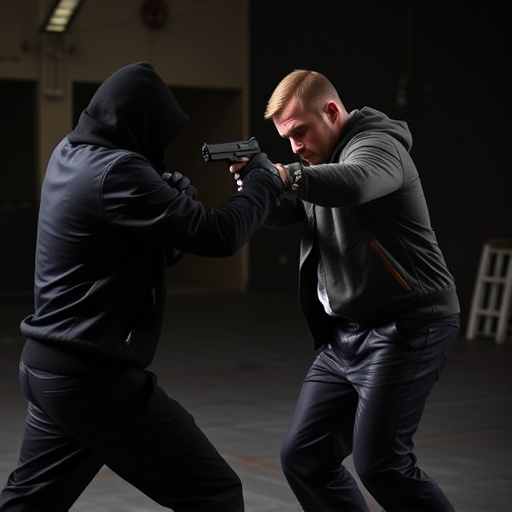Stun guns with a two-step activation mechanism offer enhanced safety and discreet self-defense. Modern designs focus on minimal visual and tactile cues for easy activation in public. Advanced materials and manufacturing create smooth, blendable surfaces for the most concealable stun gun design. Rigorous testing ensures reliable performance and accurate jolts. Understanding local laws is crucial when carrying a stun gun, especially for highly concealable models.
In today’s world, personal safety is paramount. Stun guns, compact self-defense tools designed to disable attackers, have gained popularity. Understanding the inner workings of their activation mechanisms is crucial for effective deployment. This article explores innovative designs that enhance concealment, focusing on the most discreet stun gun models available. We delve into safety features, material choices, testing methods, and legal considerations, providing insights into how modern stun guns prioritize user well-being while offering powerful protection.
- Understanding Stun Gun Activation Mechanisms
- Design Innovations for Concealment
- Safety Features in Compact Stun Guns
- Impact of Material Choices on Discreetness
- Testing Methods for Optimal Performance
- Legal Considerations: Carry and Use Protocols
Understanding Stun Gun Activation Mechanisms
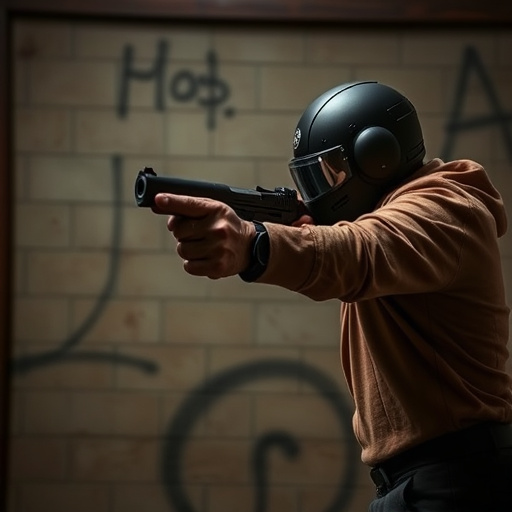
Stun guns, also known as electronic control devices (ECDs), operate on a simple yet effective principle: delivering an electric shock to temporarily incapacitate a target. Understanding how these devices activate is crucial for safety and effectiveness. Most stun guns employ a two-step activation mechanism designed for easy operation while minimizing accidental discharge.
The first step involves the trigger, which can be a simple pressure-sensitive button or a more complex mechanical lever. This trigger initiates the process but does not deliver the shock directly. The second stage is a safety switch that must be activated to complete the circuit and release the electric charge. This dual-step design ensures that users have control over when the stun gun activates, making it particularly appealing for self-defense scenarios where discreteness is key. Among various models, the most concealable stun gun designs often prioritize this safety switch mechanism, allowing users to keep their device hidden while still providing a reliable means of protection.
Design Innovations for Concealment
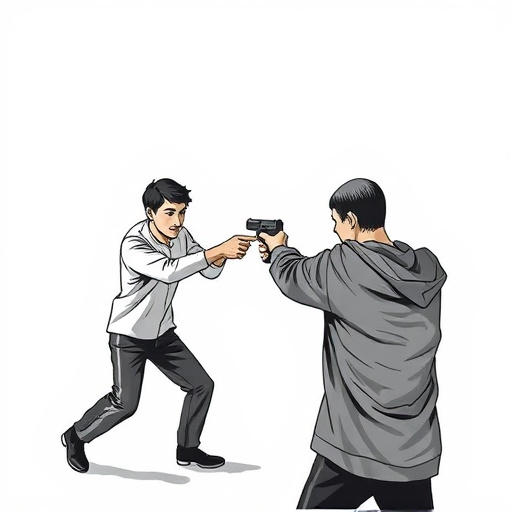
The evolution of stun guns has led to some innovative designs focused on concealment, aiming to make these self-defense tools more discretely accessible. One of the most significant advancements is the integration of compact and ergonomic features into modern stun devices. These innovations allow for a smaller form factor without compromising power or safety. For example, the latest models often feature slim profiles, curved shapes that mimic natural body contours, and materials that reduce bulk, making them easily concealable under clothing or in hand pockets.
Designers have also explored creative activation mechanisms to further enhance concealment. Instead of traditional triggers, some stun guns incorporate sensitive pressure points or tactical switches designed for subtlety. The most concealable stun gun designs often prioritize minimal visual and tactile cues, ensuring users can activate the device without drawing unnecessary attention in public spaces. This blend of form and function offers a practical solution for individuals seeking to enhance their personal safety discreetly.
Safety Features in Compact Stun Guns
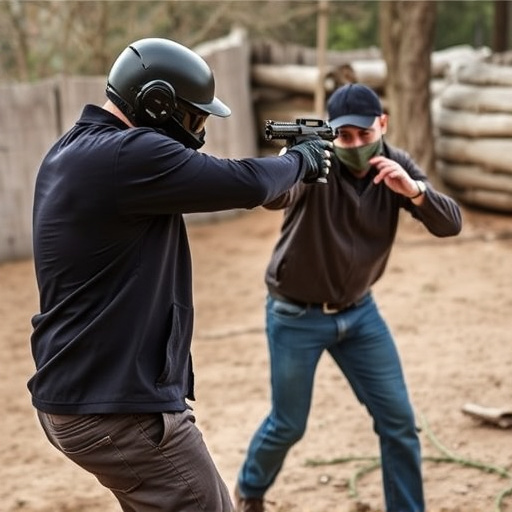
Many modern compact stun guns prioritize safety features, especially considering their most concealable stun gun design, making them a popular choice for personal defense. These devices often incorporate advanced safety mechanisms to prevent accidental activation. One common feature is a trigger lock or safety switch that requires intentional and deliberate action to deploy the stun charge. This ensures users have complete control over when to use the device, reducing the risk of unintended discharge.
Additionally, some models employ smart technology, such as motion sensors or pressure-sensitive triggers, which activate only when detecting movement or physical contact, further minimizing the chances of accidental activation during storage or unexpected situations. These safety features contribute to the overall reliability and user-friendliness of compact stun guns, making them powerful tools for self-defense while ensuring responsible handling.
Impact of Material Choices on Discreetness

The choice of materials plays a significant role in achieving discreetness with a stun gun. When designing a device intended to be concealed, material selection goes beyond functionality and aesthetics; it’s about minimizing visual and tactile clues that might reveal its true purpose. For instance, a stun gun with a smooth, non-reflective surface made from materials like high-quality metal or durable plastic can help it blend into various environments, making it less noticeable.
The most concealable stun gun design often incorporates subtle contours and ergonomic shapes to facilitate easy hiding while ensuring the device remains comfortable to hold. Advanced manufacturing techniques allow for intricate designs that reduce the overall profile of the weapon, making it easier to conceal in pockets or small bags without drawing unnecessary attention. This discreetness is not just about aesthetics; it’s a crucial safety feature, ensuring users can deploy the stun gun when needed without alerting potential threats.
Testing Methods for Optimal Performance
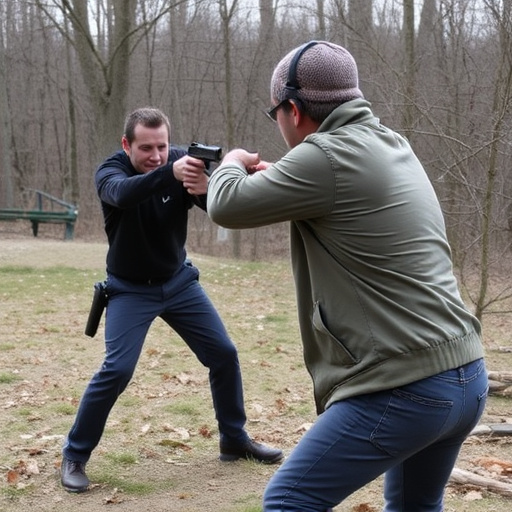
Testing methods play a pivotal role in ensuring optimal performance from your stun gun, especially when considering its primary purpose as self-defense. One key aspect to evaluate is the stun gun’s activation safety switch, which should be both reliable and concealable—a critical feature for its most concealable stun gun design. The testing process involves simulating various scenarios to gauge response time and consistency, ensuring it operates smoothly under stress.
Different environments and conditions can impact performance, so rigorous testing is essential. This includes assessing the switch’s sensitivity to pressure or movement, especially in situations where the user might be panicked or physically constrained. By subjecting these safety mechanisms to extensive trials, manufacturers can guarantee their stun guns deliver a powerful jolt when needed while minimizing accidental activations, making them safer and more effective tools for personal protection.
Legal Considerations: Carry and Use Protocols
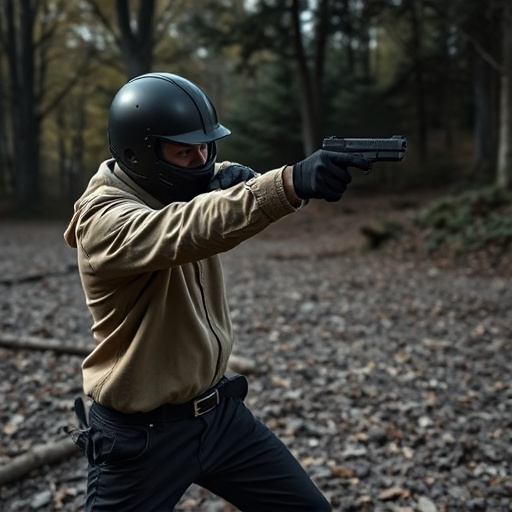
When considering the legal aspects of owning and using a stun gun, understanding carry and use protocols is paramount. The legality of stun guns varies significantly across jurisdictions, so it’s crucial to research and comply with local laws. Many regions have specific regulations regarding who can possess and under what circumstances these devices can be employed. For instance, some areas require permits or registration for stun guns, while others have restrictions on their use by certain demographics.
One of the key considerations is choosing a stun gun with the most concealable design to maintain discretion. Despite their potency, advanced models can be designed to fit easily into pockets or hidden under clothing, making them less noticeable than traditional self-defense tools. This subtle approach can enhance safety and reduce potential legal repercussions, especially in situations where swift intervention is necessary but drawing attention could compromise the outcome.
The development of compact, discreet stun guns has evolved significantly, integrating advanced safety switches and innovative design elements. These features, combined with careful material choices, enable users to carry self-defense tools responsibly while maintaining maximum discreteness. Through rigorous testing and an understanding of legal protocols, the most concealable stun gun designs offer both effectiveness and peace of mind for those seeking personal safety in various environments.
